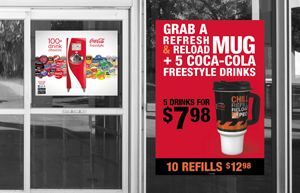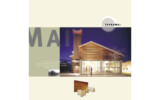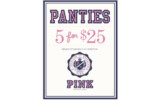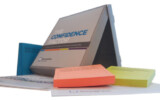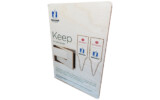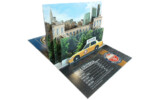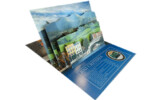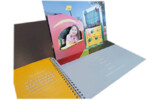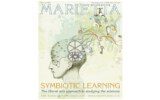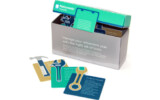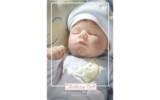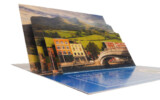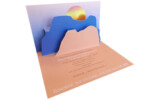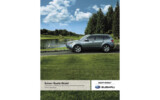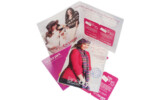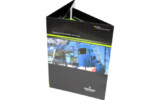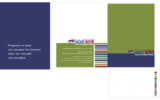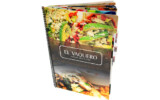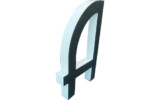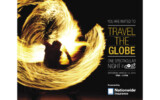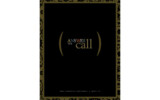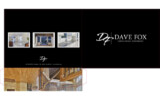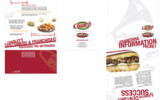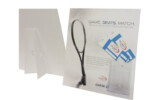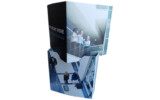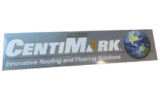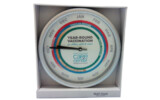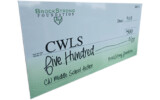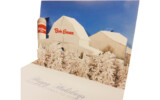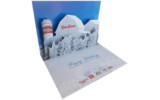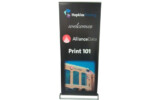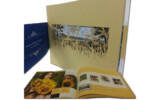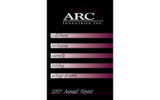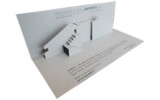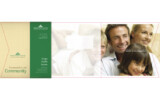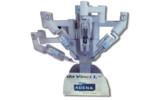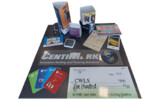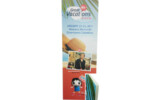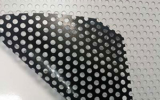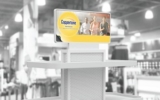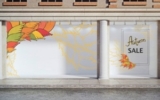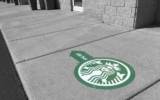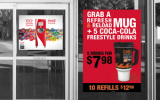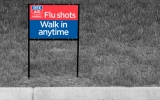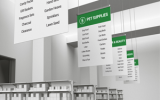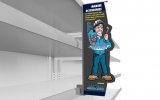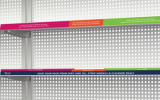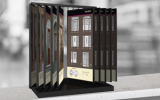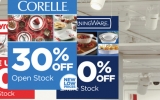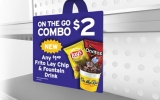What Are Window Graphics?
Storefront windows serve as the best of both worlds: They allow your customers to see what’s inside while enabling natural light to filter into the store. Done effectively, storefront windows can be used as a marketing tool to entice people to come inside and shop.
Window graphics are used every day, at retail shops, restaurants, convenience stores, and beauty salons to inform and attract customers. What you may not realize is how many different constructions and material options there are in the world of storefront window graphics.
Types of Window Graphics
Let’s go over a few types of window graphics so you can decide which window displays are the right type and learn how window clings are actually different from window decals. By the end of this article, you may know more about window advertising than you ever expected, and better understand why they can serve as excellent eye-catching tools to promote an event, market a product or announce a new-and-improved service.
There are several different types of window graphics used to enhance advertising at the point of purchase in retail shops and other businesses. A few of the types that we will discuss are window clings, window decals, die-cut transfer decals, and see-thru window decals. Learn more about each of these window advertising tools and how they are each unique and offer a great solution to fit your window advertising needs.
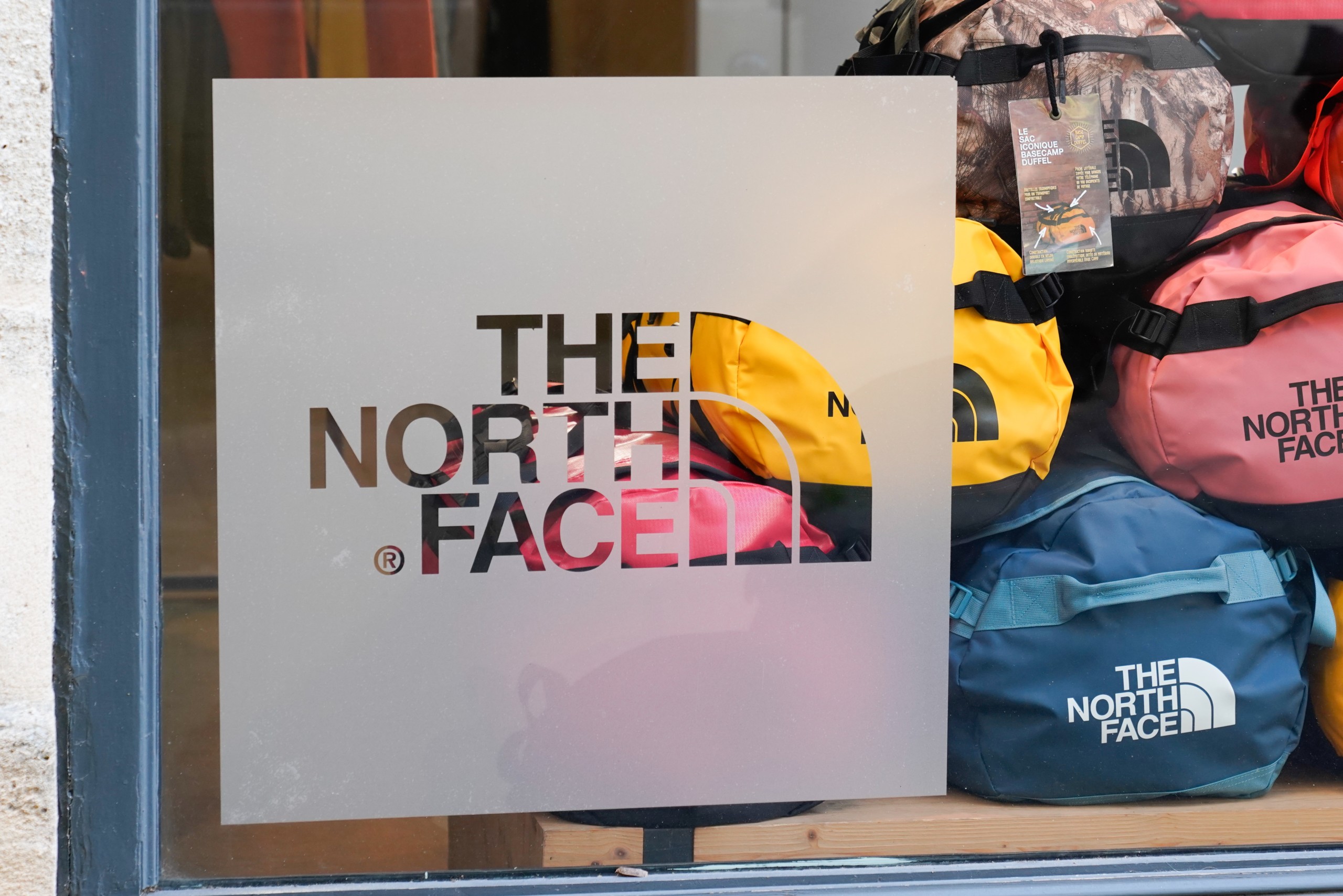
What is a Window Cling?
Otherwise known as static cling graphics, window clings are a glass advertising product that can bond to glass without the use of adhesive. This allows for easy installation because there isn’t a sticky adhesive applied to one side, so they can be more effectively removed and reused, or applied to another surface such as vehicle windows. This marketing tool is great for temporary uses where ease of installation or removal is key. Using window clings allows you to focus on bigger things like building your brand or promote a new sale.
Window clings are available in a few different material options, but most commonly are made of white or clear PVC static cling vinyl. Keep in mind that window clings can be made for first surface or second surface applications but are not designed for exterior use.
What is a Window Decal?
Decals and clings are terms that are often used interchangeably. But anyone in the printing business will tell you they’re definitely different. The main difference is that window clings are an extremely soft and heavily plasticized vinyl material that bonds to the window by ‘wetting’ out, as opposed to window decals which use a pressure-sensitive adhesive to bond to the surface. In this way, window decals are multifunctional, more permanent, and used for things beyond glass since the adhesive can bond to nearly any type of surface. In other words, they don’t necessarily have to go on windows.
The type of adhesive and material used for window decals all depends on how you intend to display them – and for how long. For example, long-term-use applications or places where the decal may get peeled away should have their graphics made using permanent adhesive. This may also depend on whether you intend to place them outdoors or indoors, as the weather can affect the bond and overall durability. Removable adhesive is suggested for short-term applications where clean residue removal is important.
If you’re not sure how to construct or what material you want to use for your window decal, you’ll want to contact us at Hopkins Printing. Letting us know how you expect to use your window decals and the surface material it’s being applied to will allow us to help you determine the best combination of vinyl film and adhesive.
What is a Die-Cut Transfer Decal?
Die-cut transfer decals are another form of a window decal but custom cut to a wide assortment of custom shapes – whether simple or complex. Frequently seen on glass doors and windows displaying the address, hours of operation, or the company logo, die-cut transfer decals are sometimes a single intricately cut shape or a series of different shapes like letters and numbers that are placed on the glass at the same time as a group.
The intricate shapes and complex cuts are held in the perfect orientation of each other using a transfer tape. The transfer tape is peeled away and removed after the whole decal is installed.
Another distinguishing characteristic of this type of window advertising product is that the bounding material perimeter isn’t seen with the die-cut transfer decal, which makes the end product far superior to the eye. This provides a look and feels like the advertising is almost a part of the window itself as if it came that way. Die-cut transfer decals can be fabricated individually – such as for letters or numbers – but they’re able to maintain the same evenness in spacing relative to one another with transfer tape.
What’s the Difference Between a Decal and a Sticker?
In a nutshell, decals are a type of sticker. Just like how all toads are frogs but not all frogs are toads, the same can be said about decals and stickers. Stickers are generally cheap small adhesive-backed graphics made using paper or plastic base materials and often called labels. Decals meanwhile are made of higher quality plastic films, larger in size, and used for more decorative uses like on windows, store signage, floors, vehicle wraps, and walls.
Are Decals Easy to Remove?
Absolutely! Decals are relatively easy to remove as long as it is done so carefully and with the right tools. The best option is to apply heat to the vinyl decal so the adhesive below softens up and becomes easier to remove. For temporary uses, removable adhesives are an option to make removability even easier.
What are See-Thru Window Decals?
One of the increasingly popular window advertising types is the see-thru window decal, sometimes referred to as perforated window graphics or one-way vision graphics. When these graphics are applied to storefront windows, customers on the inside of the glass can see through them to what’s outside, but not the other way around. In other words, the only thing people on the outside can see is the signage or image itself.
See-thru window signage is ideal for filtering light, increasing security, or simply advertising on a window without losing the natural light that comes through the windows. From an advertising and marketing standpoint, though, one-way vision graphics are great for drawing attention with eye-catching color to a particular sale, announcement, or slogan.
See-thru graphics are made possible by printing onto a unique white vinyl film that has thousands of hole perforations and a black backside. The perforations can range in size to make viewing through the material easier or make the graphic more vibrant. A 70/30 pattern implies that there is 70% material and 30% holes, and the graphics will be more impactful but harder to view through a 50/50 ratio pattern.
One of the secrets to this material is that the printable side starts with a white substrate to make the colors POP, but the opposing side is black to make viewing easy on the eyes. The human eye naturally focuses on whatever is brighter so it easily looks through the black material and focuses on what is beyond the glass.
See-thru window graphics are most commonly mounted on the exterior of the glass window, but only a few companies – like Hopkins Printing – with its screenprint capabilities can make the see-thru window graphics for 2nd surface interior mounted graphics. If you’re in need of perforated window graphics but want to keep them out of the outside elements, reach out to us for a quote.
Clear Versus White: What’s The Difference?
Window decals are printed onto white or clear materials. White substrates are typically reserved for exterior mounted and 1st surface applications or for manufacturers that can’t print white ink. Window materials printed onto white vinyl are great if vibrancy and color are most important.
Clear substrate materials are required for 2nd surface window applications if you want the graphic mounted on the inside of the glass for outside viewing. Also, clear materials are ideal for designs where the die-cut perimeter shape needs to be hidden.
First-Surface Versus Second-Surface Printing: Is One Better Than The Other?
You know window decals and clings are designed to be placed on glass surfaces, but you may not have considered the differences and distinctions between first- and second-surface printing. Unique to clear materials like acrylic, polycarbonate, PETG, Lexan, and various clear PVC vinyl products, the printing can be done on the front (first surface) or reverse printed on the back of the material (second surface). Much like the clear materials you use, the surface you select to print on all depends on what you most want out of your advertising so the signage can better connect and resonate with your customers.
First-surface printing is when the actual print for the sign is cast on the front of the material, as you might expect. It’s the most common practice and is often chosen because it can help customers see designs, lettering, and other graphics more clearly, especially when they’re a great distance away.
Second-surface printing means the artwork is printed on the opposite side of the material than normal. To do this on clear material, the image is reflected (mirrored) and printed on the clear material then backed with white to keep the colors vibrant. Printing second-surface forces the viewer to look through the material to see the image which adds protection, gloss, depth, and a bit of elegance. Second-surface printing comes in handy for window advertising on storefront windows, as it makes installing graphics on the inside of the store possible. This protects the decal from damage caused by vandals, abrasion, and outside weather conditions.
How to Choose the Best Window Graphics?
When choosing between first-surface and second-surface printing, it all depends on your goals and how you want to attract customers. First-surface printing can be a good option because it minimizes glare that can make it difficult to see signage on the glass during certain times of the day when the sun is shining brightly. However, because they’re usually installed on the outside, first-surface printing signage can be more prone to damage caused by wind and ultraviolet rays.
Second-surface printing guards the effects of bad weather, but because it’s positioned from behind storefront windows, colors may not be as eye-catching as you’d like them to be. Additionally, if the windows are tinted, second-surface graphics will be extremely difficult to see and first-surface will always be the better option.
Custom Window Graphics From Hopkins Printing
At Hopkins Printing, we offer the right blend of experience, equipment, technology, and commitment to ensure that the signage you get from us will be done right the first time. We offer digital printing, screen printing, pre-press, and finishing. Hopkins Printing also handles order fulfillment so you can get the window advertising decals and see-thru graphics shipped directly to you or your store base. Or if you live in northern Illinois, feel free to come to pick them up at our headquarters here in Elgin, which is roughly 35 miles northwest of Chicago.
For custom window signage done right and done fast, turn to Hopkins Printing. Contact us today!

